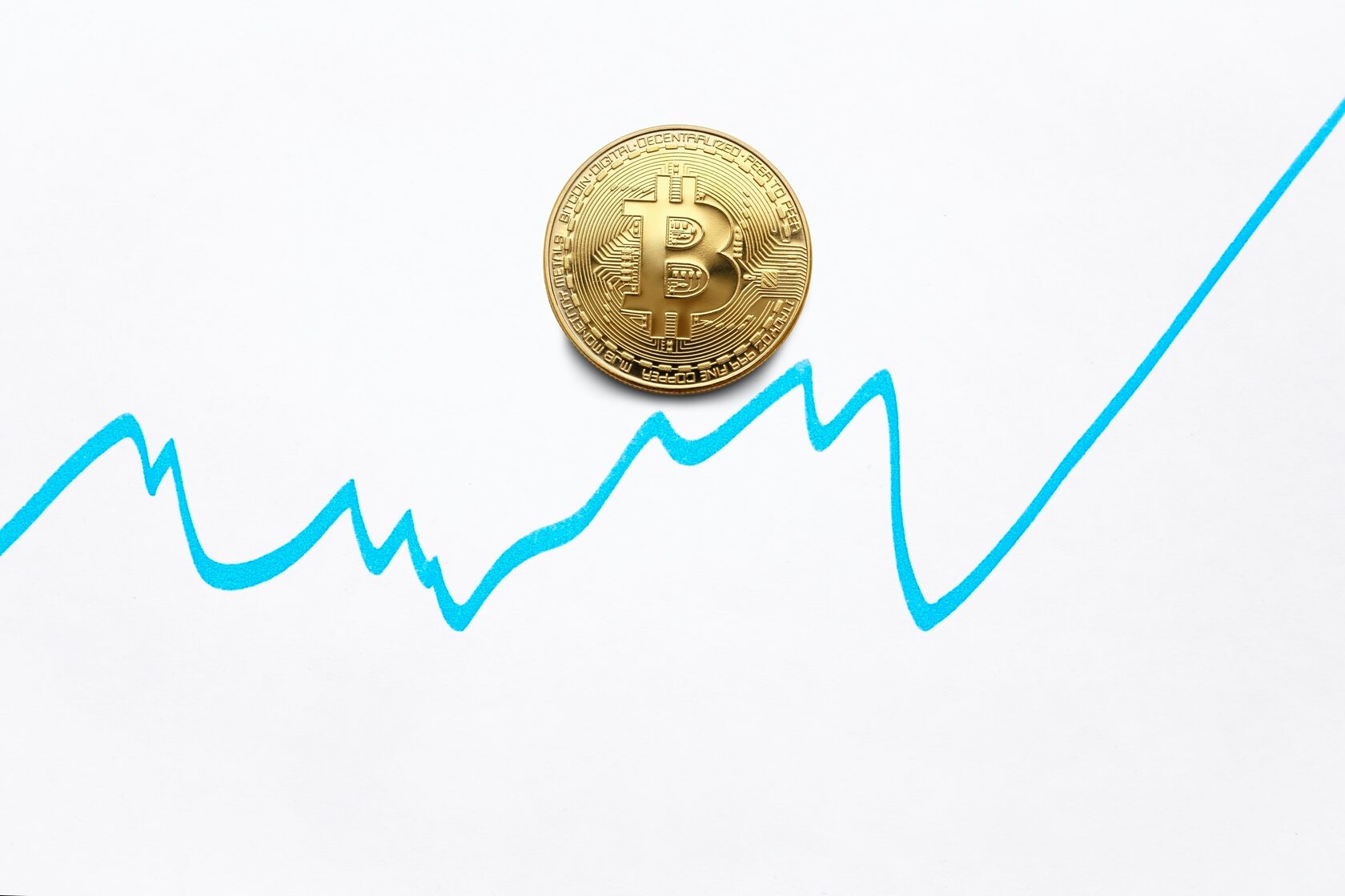Traditional (non-crypto) hedge funds largely stay away from crypto investment, with the biggest concern being “price volatility”. We have analysed data on the volatility levels of Bitcoin vs some leading technology and banking equities to see if these concerns are still relevant. Here is what we have found.
Crypto Investment Levels & Fears of Price Volatility
Within the overall institutional investor ecosystem, traditional hedge funds - those that don’t have a specialised focus on crypto - feature some of the lowest levels of investment in cryptocurrency. According to research conducted by Fidelity Investments, at the end of 2022, only 7% of these funds held investments in digital assets. Comparable figures for family offices and high-net-worth individuals were 37% and 82%, respectively.
Percentage of institutional investors holding digital assets by investor type

Image Source: Fidelity Institutional Investor Study
The same research found that the biggest obstacle to crypto investment was “price volatility” commonly associated with digital assets.
The top 10 biggest obstacles to investment in digital assets
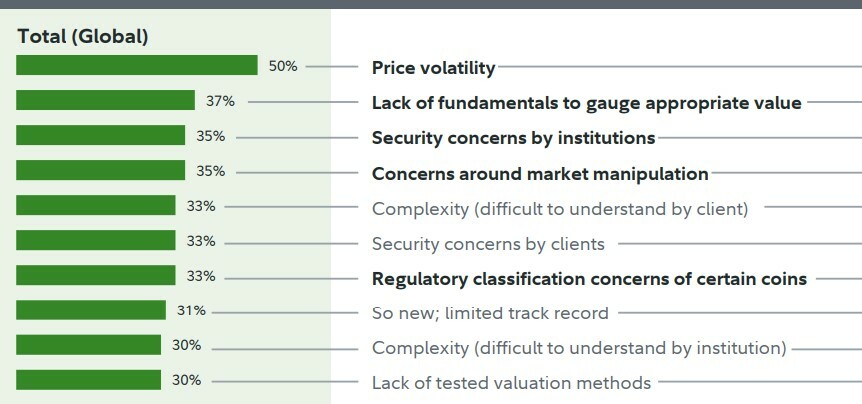
Image Source: Fidelity Institutional Investor Study
As evident from the chart above, price volatility is confidently the leader among the obstacles cited by the study respondents. While the lack of fundamentals, security, and market manipulation concerns feature high in the rankings, it’s the price volatility that leads the pack, notably ahead of all the other top obstacles.
Comparing Bitcoin with Equities
Excessive levels of asset volatility are certainly a concern for any investor, and hedge funds are no exception. However, if these concerns lay down a major roadblock to investment in an asset class, they better be justified, don’t they?
We crunched some data on asset volatility and compared the volatility levels of Bitcoin and several technology and banking stocks to once and for all validate or reject the industry concerns. Bitcoin is the major cryptocurrency on the market and, in our view, has matured and stabilised in recent times. It is often discussed along with other (much more volatile) crypto coins, which further perpetuates perceptions of Bitcoin’s extreme volatility.
We compared Bitcoin with three major technology stocks – Tesla (TSLA), Microsoft (MSFT), and Google (GOOGL) – and three big banking stocks – Bank of America (BAC), Capital One (COF), and HSBC (HSBC). Technology equities are known to be among the more volatile assets on the stock market, while banking equities are, on the contrary, believed to feature relatively low volatility.
When selecting banking stocks for comparison, we chose major banks that kept a relatively lower profile during the banking crises earlier this year. Banks like JPMorgan Chase or Citigroup were all over the news, which might have affected the dynamics of their price volatility.
We used the coefficient of variation as the standard price volatility measure for the analysed assets. The prices were adjusted closing prices sourced from Yahoo Finance.
The Results!
As the first step, we looked at the volatility levels (coefficients of variation) for Bitcoin and the six equities for the last one month (to July 30). One month is, of course, a very short period to judge about an asset’s typical volatility levels. However, it might provide some insight for short-term traders. Besides, we wanted to leave no stone unturned when evaluating the volatilities of Bitcoin vs stocks.
The one-month volatility levels are shown in the chart below.
One-month Volatility Levels – Bitcoin & Equities
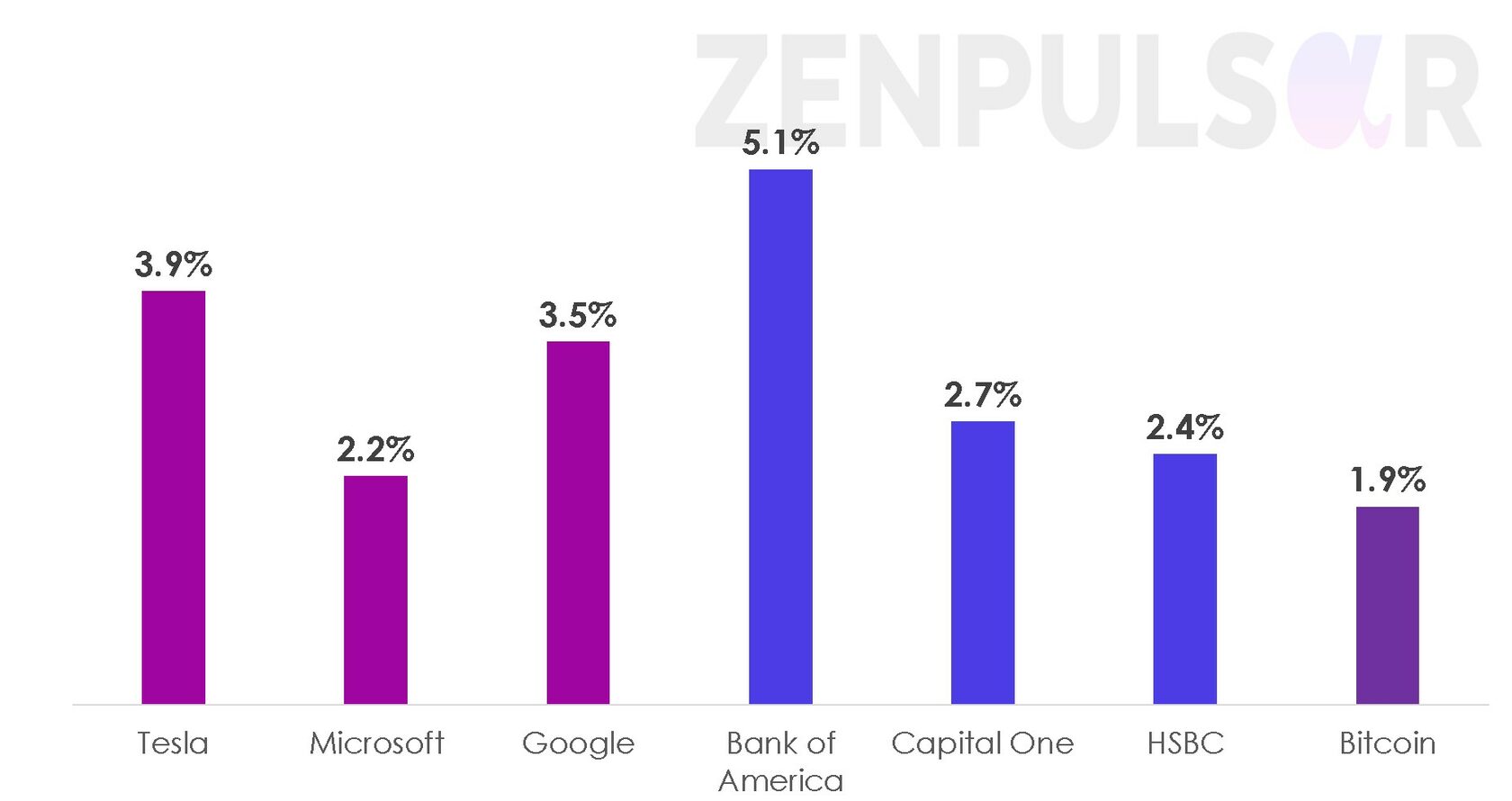
That’s right – in the last one month, Bitcoin has been the least volatile among the seven analysed assets!
We then looked at the last 3-month term, a time interval more relevant for the majority of investors.
Three-month Volatility Levels – Bitcoin & Equities
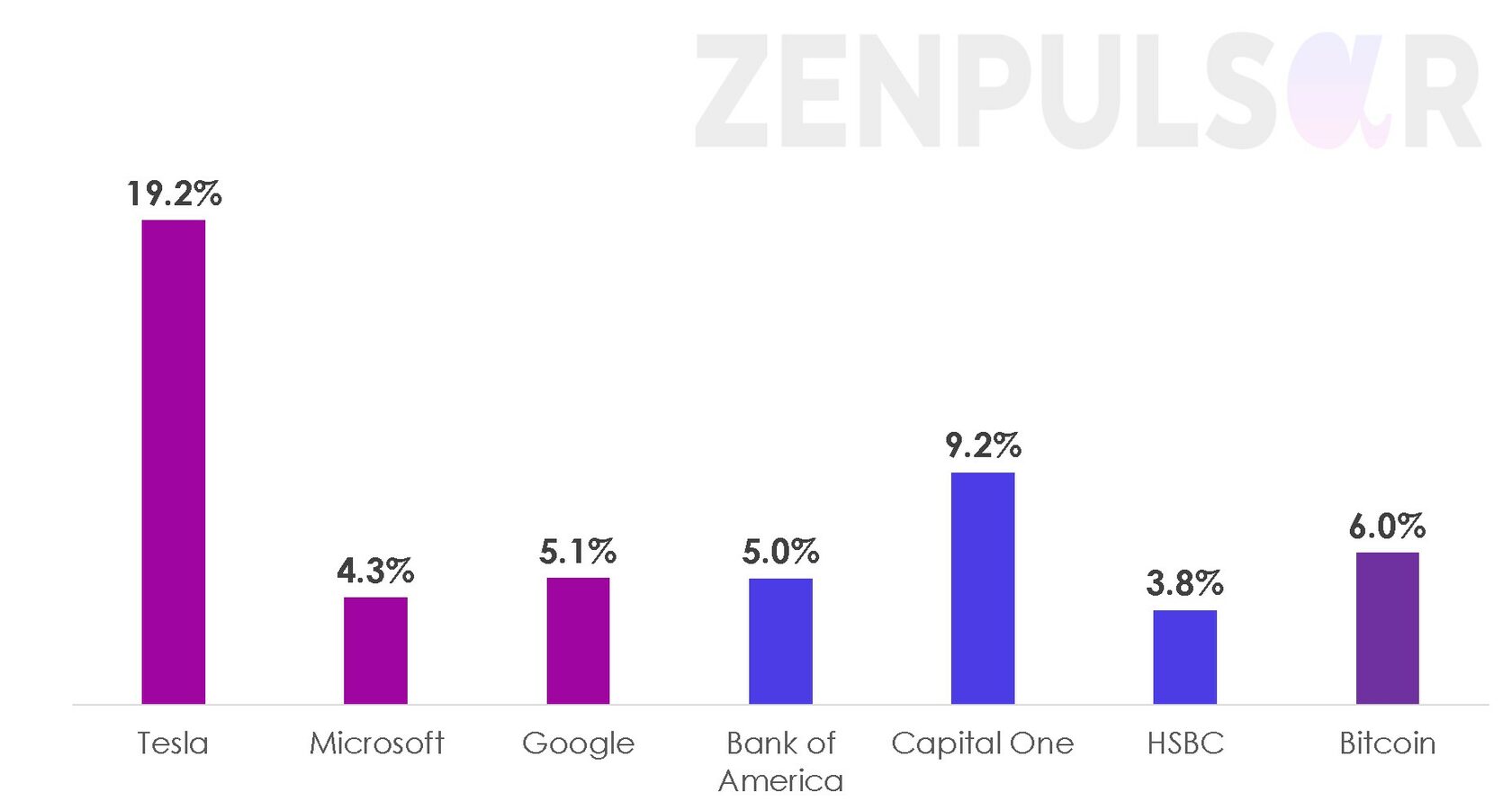
At the 3-month interval, Bitcoin again isn’t among the most volatile assets. Bitcoin’s 6% volatility is confidently toppled by Capital One’s 9.2% and Tesla’s more than three times larger 19.2%.
Looking at these short-term intervals, we started to wonder if we were getting the right results and double-checked our figures furiously. Why is Bitcoin, the supposed king of volatility, nowhere near the most volatile asset on our list?
We then looked at the last 6 months to 30 July. The results kept surprising us.
Six-month Volatility Levels – Bitcoin & Equities
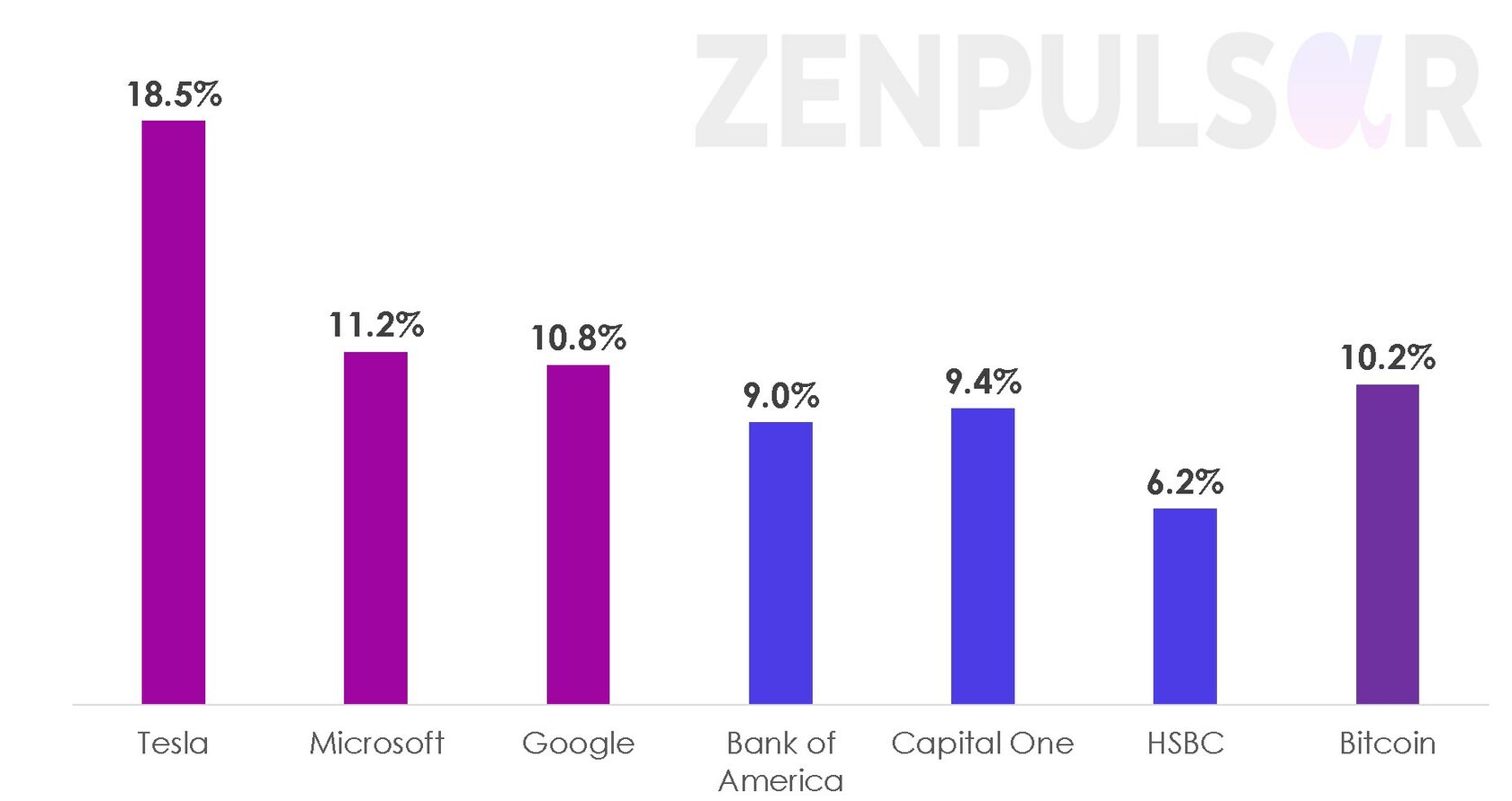
At the 6-month interval, Bitcoin’s volatility levels were lower than Tesla’s and roughly comparable to those of Microsoft, Google, Bank of America, and Capital One.
At none of the three short-term intervals – 1, 3, and 6 months – Bitcoin featured comparatively high volatility levels, and it was clearly Tesla, not Bitcoin, that was bidding for the crown of the volatility king.
We finally looked at two longer-term intervals – one year and two years. The results for one year to July 30 are shown below.
One-year Volatility Levels – Bitcoin & Equities
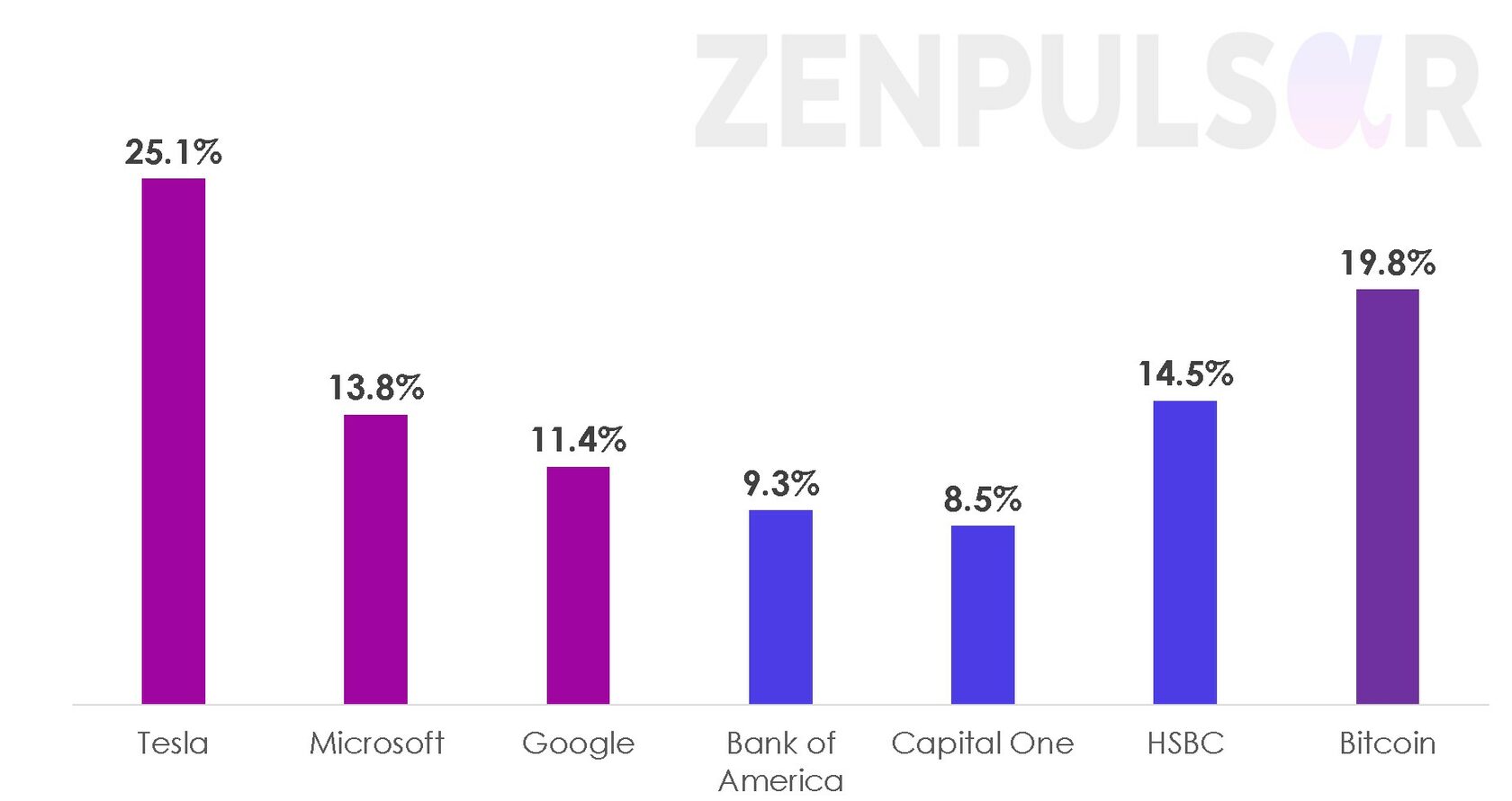
Over the last year, the Tesla stock featured the highest volatility (25%) in the comparison set. While Bitcoin had the second-highest result here, its volatility coefficient (20%) wasn’t much higher than HSBC’s (15%) or Microsoft’s (14%). Definitely not the kind of differences many expect from an asset rumoured to be vastly more volatile than stocks.
As the last bit of our analysis, we took a look at two-year volatility levels.
Two-year Volatility Levels – Bitcoin & Equities
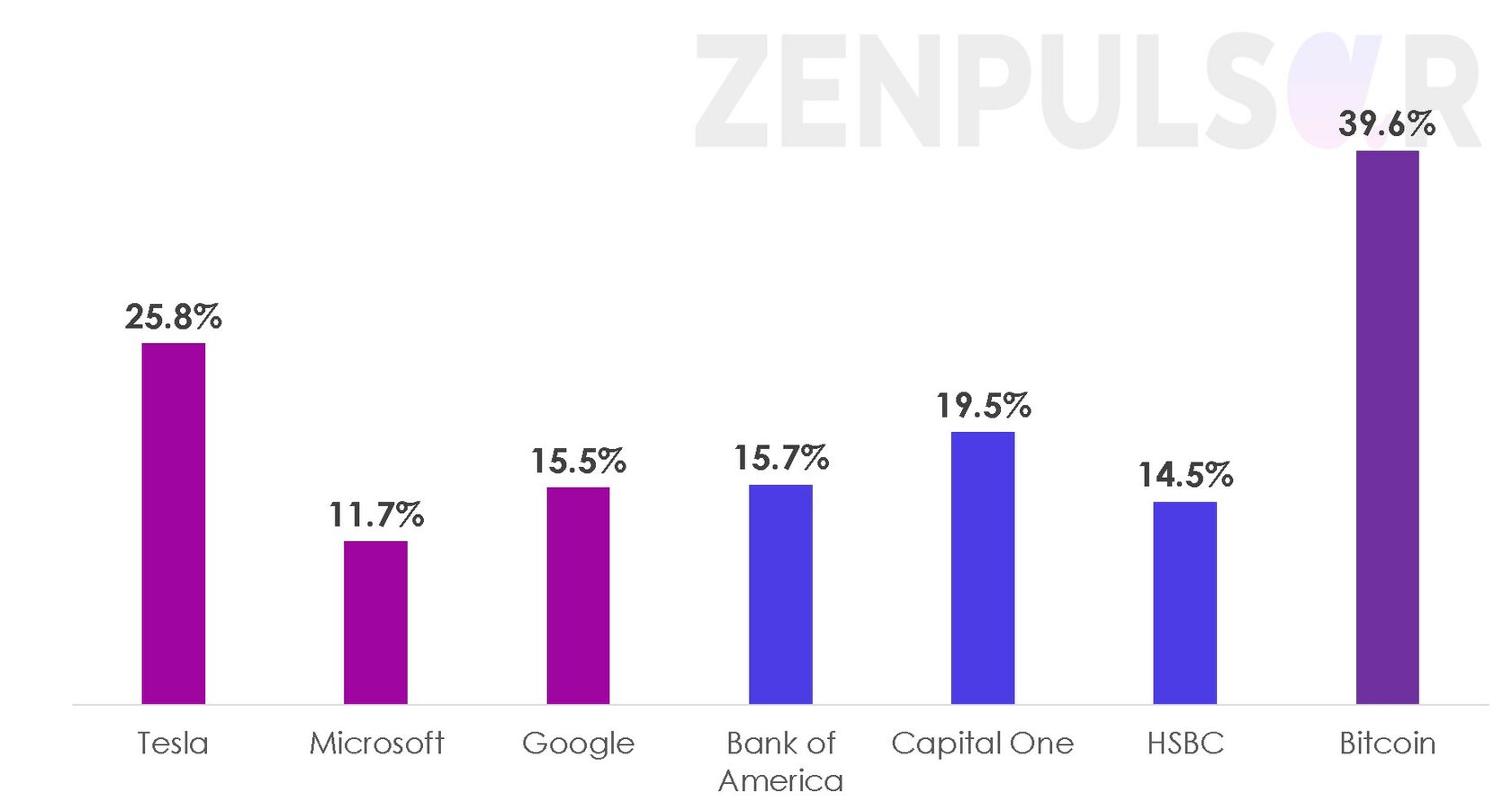
Only the two-year results, stretching back to mid-2021 when the crypto market was in a wild bubble, were showing what many fund managers believe to this day – that Bitcoin’s volatility is on a scale of its own.
During the 2021 crypto bubble, Bitcoin’s price rose to over $65,000 by November of that year and then experienced the mother of all crashes, diving to around $36,000 by mid-January 2022. Further steep declines followed, and the cryptocurrency only stabilised by June last year.
Most of Bitcoin’s volatility observed in the 2-year chart above is due to the initial half of the measurement period (mid-2021 to mid-2022). Even by the standards of the crypto market, the wild volatility of Bitcoin during the 2021 crypto bubble and the subsequent crash is considered extreme.
Between mid-2021 and mid-2022, Bitcoin experienced extreme ups and downs, as part of the wider 2021 bubble. While being referred to as the events of 2021, the actual period of the bubble and burst fell between October 2020 and June 2022. The chart below shows Bitcoin’s last 5 year prices, with the bubble and burst period annotated.
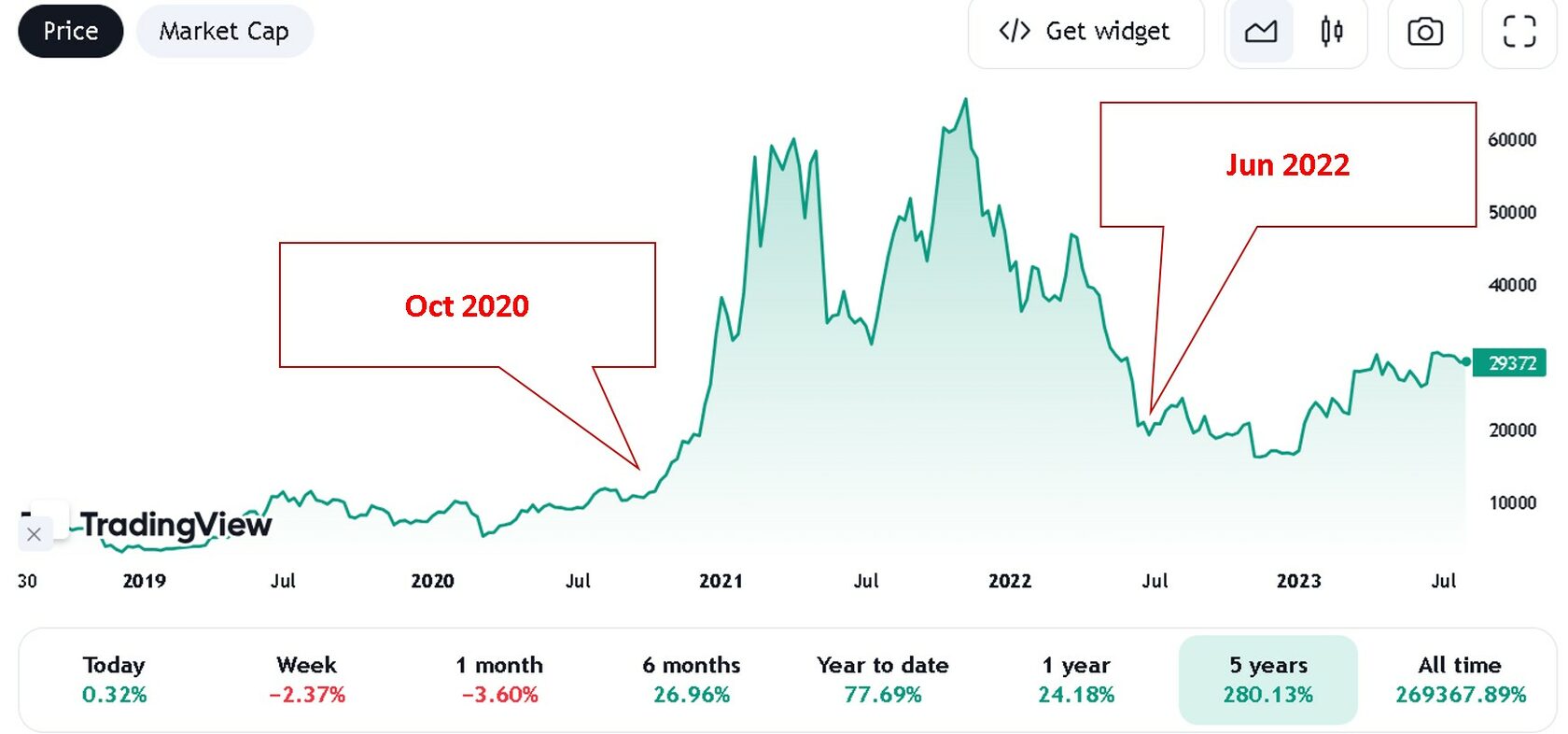
Image source: Adapted from Tradingview.com
As evident from the chart, ever since Bitcoin rose to any kind of popularity and public awareness in the last few years, the crypto has experienced a period of extreme volatility only between October 2020 and June 2022. At the end of the day, the stock market has also had its uncharacteristic dark periods, most notably the market turmoil of 2008-2009 brought about by the subprime mortgage crisis and the Great Recession.
Yet, after the events of 2008-2009, nobody assigned stocks to the “too volatile to touch” class to the best of our knowledge.
At the same time, many investors and fund managers are firmly holding on to the outdated belief that Bitcoin is inherently volatile to the extreme, largely due to one uncharacteristic period. As our analysis above shows, in the last one year, Bitcoin has had volatility levels comparable to those of Microsoft, Google, Bank of America, HSBC, and the unassuming Capital One, while also having a notch lower volatility than Tesla.
Why Avoiding Bitcoin Spells Missed Alpha Opportunities
Dispelling the myth of Bitcoin’s inherent volatility is important given how high it ranks among the major fears of fund managers. Bitcoin is an asset that has delivered positive returns over the last year, the last 6 months, and the last 3 months. It might not be applicable to all institutional investors’ needs, and its future performance might, of course, vary.
However, staying away from a major alternative asset due to perceptions of excessive volatility, in this specific case, is subscribing to an outdated belief that no longer reflects today’s market realities.
According to data from Preqin, at the end of 2022, hedge funds focusing on niche strategies (a category which also includes crypto investment) had seen the second-highest growth rates (after CTAs), as measured by the increase in AUM. On that measure, niche strategies had outperformed equity strategies, credit strategies, macro strategies, and most other investment strategies employed in the industry.
Given the strong performance of niche strategy funds and our analysis that dispels the myth of Bitcoin’s inherent volatility at all times, hedge funds avoiding this crypto might be leaving alpha opportunities on the table.

